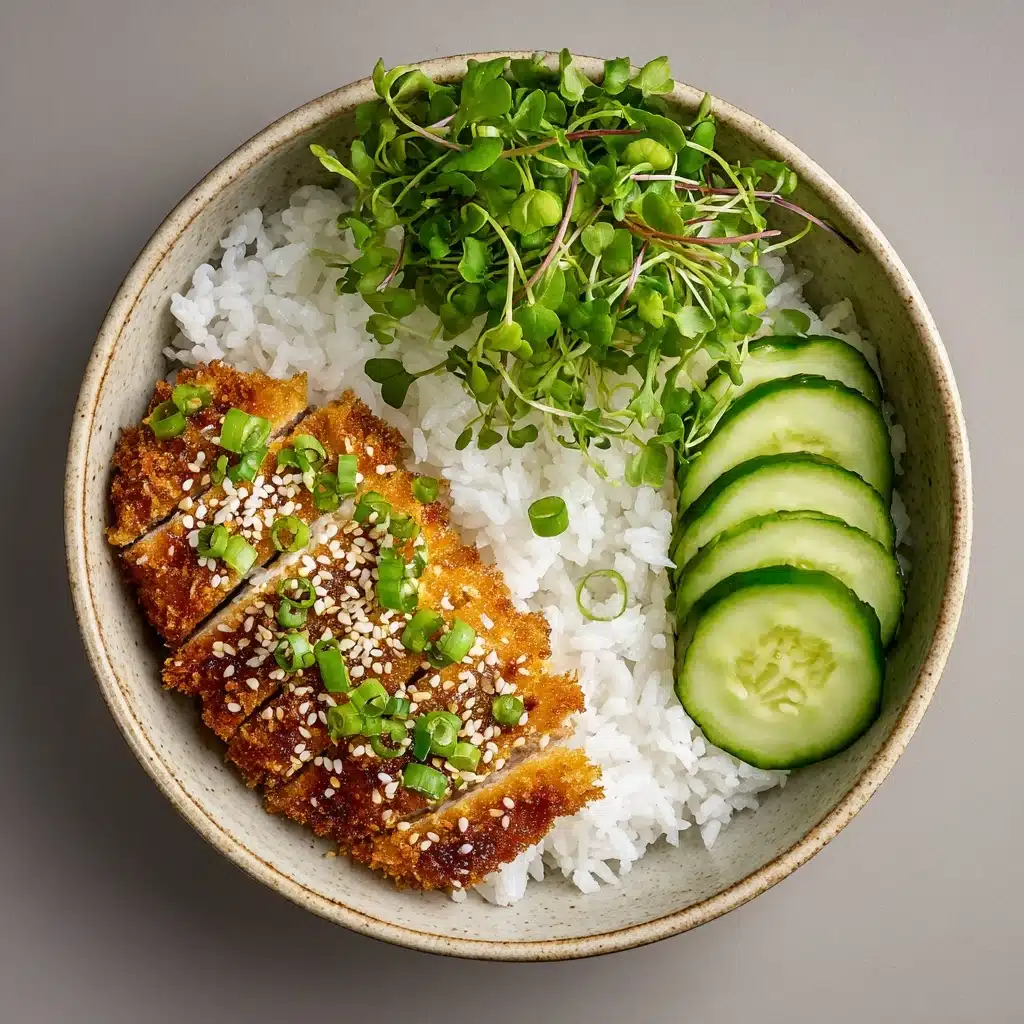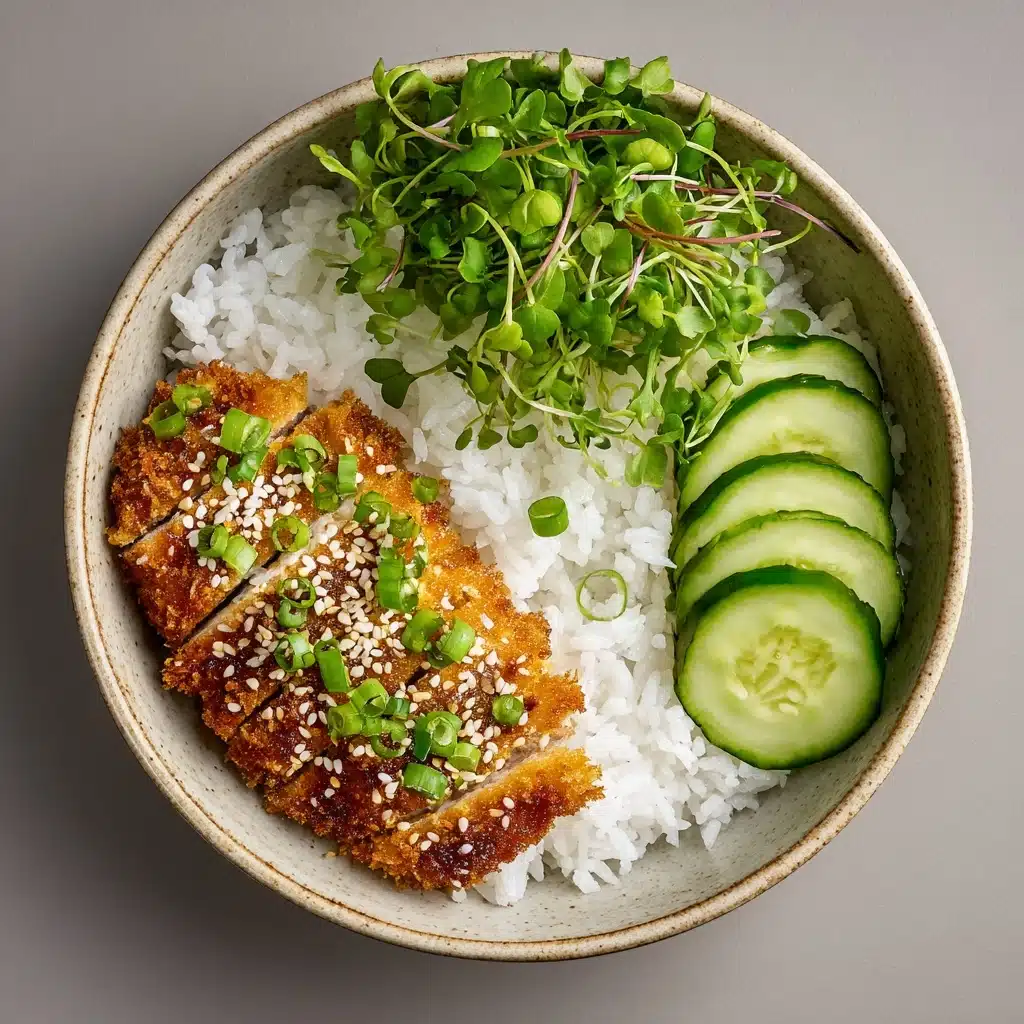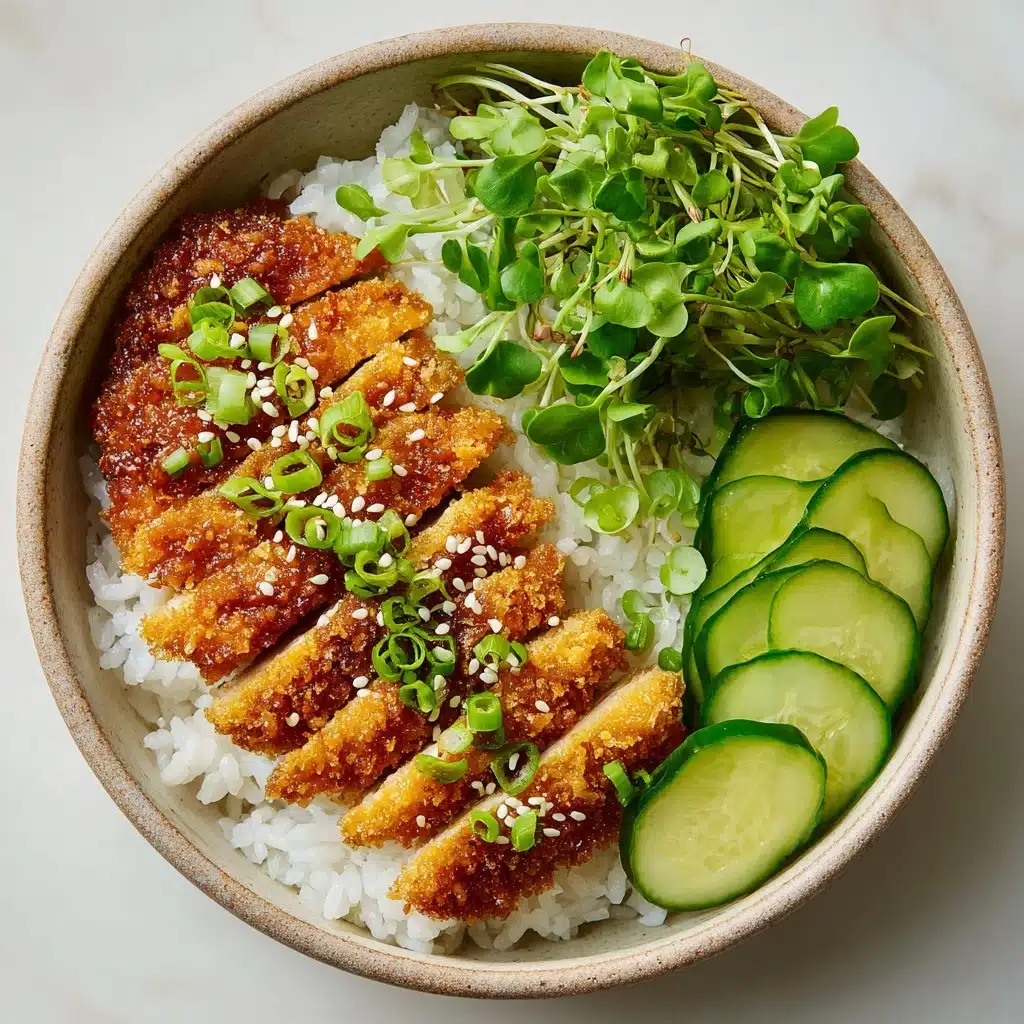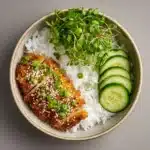If you’re looking for a dish that brings together irresistible crunch, satisfying plant-based protein, and vibrant Japanese flavors, let me introduce you to the wonder that is Tofu Katsu. Crispy on the outside, tender on the inside, this vegan version of the beloved katsu cutlet ticks every box—it’s weeknight-friendly, crowd-pleasing, and endlessly adaptable. Perfect with a drizzle of tangy tonkatsu sauce, it’s a meal you’ll return to again and again.
Ingredients You’ll Need
Great Tofu Katsu starts with humble ingredients, each playing a crucial role in creating layers of texture and flavor. They’re simple, easy to find, and come together for an unforgettable crunchy bite every single time.
- Extra-firm tofu: The backbone! Make sure it’s pressed well to get the best crispiness.
- All-purpose flour: Forms the essential base layer so your coating sticks beautifully.
- Unsweetened plant-based milk: Smooths things out and helps the panko bond; soy, oat, or almond all work.
- Dijon mustard: Adds subtle tang and depth to the wet mixture—don’t skip this!
- Panko breadcrumbs: The key to that shatteringly crisp crust you crave.
- Garlic powder: Gives a warm, savory kick to every bite.
- Onion powder: Layers in sweet aromatic flavor, making the breading irresistible.
- Salt: Essential for coaxing all the other flavors forward.
- Black pepper: Grounds the taste with a hint of heat and fragrance.
- Vegetable oil: For shallow frying—choose a neutral oil with a high smoke point.
- Tonkatsu sauce or vegan Worcestershire: The ultimate finishing touch for true katsu flavor.
How to Make Tofu Katsu
Step 1: Press and Prep the Tofu
Start by pressing your extra-firm tofu. This step is non-negotiable for perfect Tofu Katsu—removing as much water as possible ensures a firm texture and helps the coating stick. Slice the block lengthwise into four even cutlets for the perfect balance of crispy coating and tender tofu in every bite.
Step 2: Set Up Your Breading Station
For classic katsu-style breading, you’ll need three shallow bowls or dishes. Fill the first with flour. In the second, whisk together unsweetened plant-based milk and Dijon mustard until smooth. The third bowl gets your panko breadcrumbs, garlic powder, onion powder, salt, and black pepper—all mixed until evenly combined and beautifully aromatic.
Step 3: Bread the Tofu Cutlets
One by one, gently dredge each tofu slice through the flour, coating thoroughly but shaking off any excess. Next, dip it into the milk-mustard mixture until well coated. Finally, press the tofu into the panko mixture, patting gently so every inch is covered—you want the crust to really cling and give you that signature crunch.
Step 4: Fry to Golden Perfection
Pour a thin layer of vegetable oil into a large skillet and heat it to medium-high. When it shimmers (but isn’t smoking), carefully add the breaded tofu cutlets. Fry each one for about 3 to 4 minutes per side, turning gently so the crust doesn’t break, until both sides are crisp and gorgeously golden brown. Set your cooked Tofu Katsu on paper towels to drain any excess oil.
Step 5: Serve and Savor
Plate your hot and crunchy Tofu Katsu and drizzle generously with tonkatsu sauce or vegan Worcestershire. For the classic Japanese bistro touch, serve it with fluffy white rice or a nest of crunchy shredded cabbage alongside. Every bite is guaranteed to satisfy!
How to Serve Tofu Katsu

Garnishes
A sprinkle of thinly sliced green onions, toasted sesame seeds, or a handful of nori strips turns your Tofu Katsu into a feast for both the eyes and palate. For a pop of color and brightness, add a squeeze of fresh lemon or scatter a few quick-pickled veggies over the top.
Side Dishes
For a true katsu experience, pair your cutlet with a mound of steamed Japanese rice and a crisp cabbage salad lightly dressed with sesame oil and rice vinegar. Miso soup, spicy pickled cucumbers, or a simple seaweed salad also make excellent accompaniments.
Creative Ways to Present
Try slicing your Tofu Katsu into strips to pile onto a bento bowl with rice, edamame, and pickled daikon for a colorful lunch. Or, tuck a crispy cutlet between slices of soft sandwich bread with slaw for a Japanese-inspired vegan katsu sando. However you serve it, there’s no wrong way to show off these irresistibly crispy cutlets.
Make Ahead and Storage
Storing Leftovers
If you have leftovers (which is rare!), cool your Tofu Katsu completely and transfer the cutlets to an airtight container. They’ll keep in the fridge for up to three days without losing too much of their crunch.
Freezing
For longer storage, freeze the cooked, cooled cutlets in a single layer on a baking sheet. Once frozen, move them to a freezer-safe bag or container and store them for up to two months. It’s fantastic to have crispy katsu on hand for quick weeknight dinners!
Reheating
To revive the crunch, reheat Tofu Katsu in a preheated oven (375°F or 190°C) or in an air fryer for about 8–10 minutes, flipping halfway. This method brings back that fresh-from-the-skillet crispiness and keeps the inside perfectly tender.
FAQs
Can I make Tofu Katsu gluten-free?
Absolutely! Swap in your favorite gluten-free flour blend and gluten-free panko—a simple switch that keeps the coating crisp and delicious for everyone.
Can I bake or air-fry Tofu Katsu instead of frying?
Yes, you can! For a lighter version, bake breaded tofu at 400°F (200°C) for 25–30 minutes, flipping halfway, or air-fry for a similarly crispy result. Just be sure to mist the cutlets lightly with oil for maximum crunch.
What’s the best way to press tofu?
Wrap your tofu block in a clean kitchen towel, place it on a plate, and set something heavy (like a cast iron pan or a stack of books) on top for at least 15 minutes. Alternatively, a tofu press is a worthwhile tool if you make katsu often!
Is tonkatsu sauce vegan?
Many bottled tonkatsu sauces contain anchovies, but several brands offer vegan versions or you can make your own using ketchup, soy sauce, Worcestershire (vegan), and a little sugar for an authentic flavor boost.
Can I add other spices to the breading?
Definitely! Try a pinch of smoked paprika or a little cayenne for extra warmth, or experiment with five-spice powder for an intriguing twist. Tofu Katsu is a delicious blank canvas for your spice rack.
Final Thoughts
Crispy, golden, and so comforting, Tofu Katsu is the kind of recipe I reach for when I want something special with minimal fuss. If you’re craving bold flavor and serious texture, give it a try—one bite and you’ll see why this plant-powered twist on a Japanese classic is a keeper!
PrintTofu Katsu Recipe
Learn how to make a delicious vegan version of the classic Japanese dish, Tofu Katsu, featuring crispy breaded tofu cutlets served with tonkatsu sauce. This recipe is a must-try for tofu lovers and those looking for a plant-based twist on a traditional favorite.
- Prep Time: 15 minutes
- Cook Time: 10 minutes
- Total Time: 25 minutes
- Yield: 4 servings 1x
- Category: Main Course
- Method: Frying
- Cuisine: Japanese
- Diet: Vegan
Ingredients
Tofu Katsu:
- 1 block (14 oz) extra-firm tofu, pressed and sliced into 4 cutlets
- 1/2 cup all-purpose flour
- 1/2 cup unsweetened plant-based milk
- 1 teaspoon Dijon mustard
- 1 cup panko breadcrumbs
- 1/2 teaspoon garlic powder
- 1/2 teaspoon onion powder
- 1/2 teaspoon salt
- 1/4 teaspoon black pepper
- vegetable oil for frying
- tonkatsu sauce or vegan Worcestershire for serving
Instructions
- Prepare the Tofu: Press tofu to remove moisture, then slice into 4 cutlets.
- Create Breading Station: Set up three bowls with flour, milk mixed with Dijon mustard, and panko with seasonings.
- Bread the Tofu: Coat each tofu slice in flour, milk mixture, and panko mixture.
- Fry the Tofu: Fry breaded tofu in oil until golden and crispy.
- Serve: Drain on paper towels and serve hot with tonkatsu sauce.
Notes
- For a baked version, lightly spray breaded tofu with oil and bake at 400°F (200°C) for 25–30 minutes.
- Air-frying is also an alternative method.
- Pair with miso soup or pickled veggies for a complete meal.
Nutrition
- Serving Size: 1 cutlet
- Calories: 290
- Sugar: 1g
- Sodium: 460mg
- Fat: 16g
- Saturated Fat: 2g
- Unsaturated Fat: 12g
- Trans Fat: 0g
- Carbohydrates: 20g
- Fiber: 2g
- Protein: 15g
- Cholesterol: 0mg




